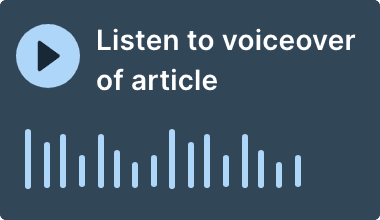$126 billion is the combined market value of the FAANGs¹ which vanished into thin air when it was reported that the Federal Trade Commission (FTC) and the Department of Justice (DOJ) had agreed on how to split up oversight of the technology giants. This is the equivalent of the entire market value of Nike, a company which was ranked the most valuable apparel brand in the world last year, being wiped out in one day.
The extent of the reaction was somewhat surprising considering the announcement on the 3rd of June was not the start of a formal investigation but merely the clarification of which federal organisation had jurisdiction over which companies. While the FTC and the DOJ have tended to focus on different industries, the technology sector has been harder to delineate and this long overdue agreement between the agencies merely clarified that the FTC would handle any antitrust investigation into Facebook and Amazon, while the DOJ would carry jurisdiction over Google and Apple.
Discussions about regulating the internet giants have been steadily increasing over the last few years and prominent figures like the presidential candidate Elizabeth Warren have been openly calling for a breakup of “Big Tech”. This political rhetoric is often backed up by well-known historical examples of large monopolies which were successfully broken up. These typically include Standard Oil, which was split into 34 different companies in 1911; and AT&T which was broken up into 7 different entities in 1974, leading to the emergence of Verizon and T-Mobile.
One should not be too quick to draw parallels between these cases. Indeed, US antitrust cases are notoriously hard to win, and the government is usually cautious when it considers bringing a case forward. This is because US antitrust law has historically been focused on consumers and on whether monopolistic practices resulted in higher prices for them. In both these cases of Standard Oil and AT&T, the government agencies were able to demonstrate that increased competition in oil refining and telecommunications would bring prices down for consumers. Applying the consumer welfare standard to Alphabet, however, is more complex. Since Google’s consumer services are provided for free and advertising prices have been trending down rather than up, the DOJ must demonstrate that under a hypothetical scenario, consumers and advertisers could have paid even lower prices. The US antitrust framework is in stark contrast to its European counterpart which is centred on whether competitors have been harmed from unfair practices rather than the consumers.
The second specificity of US antitrust law is that company break ups are not the standard remedy. Instead, US lawmakers usually take a scientific approach to establish what conduct has led to the competitive harm, and then trying to restrict only that conduct. This is exactly what happened with Microsoft, which was found guilty of monopolization but for which the DOJ’s recommendation of a breakup as a remedy was judged excessive. Ultimately the DOJ reached an agreement with Microsoft requiring it to share its application programming interfaces with third-parties to facilitate competition against its internet browser. The settlement was regarded by many as merely a slap on the wrist for Microsoft which now has a market value above $1 trillion, almost five times its market value in December 2000 when it was appealing the court’s ruling to avoid a break-up.
The last aspect of US antitrust law, and perhaps its most important, is that the FTC and the DOJ cannot unilaterally impose sanctions on the companies they investigate, but instead must make their case in a federal court.
This is again different from Europe where the ruling is handed down by the European Union competition commission that acts as judge, jury and executioner. US antitrust cases therefore typically take two to three years longer to litigate than European antitrust cases. They are also harder to win as federal judges will stick to the letter of the law, thus ensuring that political considerations do not affect the outcome of the investigation.
In a nutshell, the political context in the US and the media pressure should not affect the rule of the law. From a legal perspective the chance that Google is found guilty is low and the risk of being broken up even lower. For the sake of argument, however, let us consider what would happen to Alphabet should the DOJ recommend a break-up. First, litigation at this scale is likely to take two to three years on top of a minimum of two years to build an antitrust case of this size. Second, it is unclear today how the search engine of Google would be broken up considering its geographic footprint and its services cannot easily be delineated like those of AT&T or Standard Oil. Finally, in the event that lawmakers do find a way to break up Alphabet, this could be value accretive for shareholders as the various businesses within Alphabet could warrant higher valuations as stand-alone entities.
Ultimately, the US government faces a paradox when it comes to antitrust law. On the one hand it wants to prevent monopolies from abusing their dominant position. On the other hand, it is important to the government that they avoid discouraging businesses from striving to become the leaders in their respective industries. They fear that this could lead to complacency and lower innovation, ultimately harming the consumer. The point is that it is not illegal to be a monopoly, it is illegal to abuse that position to disadvantage the consumer.
To conclude, the market reaction has been sharp for a rather shallow announcement and there is remarkably little information one can rely upon. What we do know is that antitrust cases are notoriously hard to bring and very rarely go to trial. This case should be no exception and it will be hard to prove that consumers are disadvantaged with Google. Finally, in the unlikely event that the company is broken up, the sum of the parts of the company could be worth more than its current market value. This is because Alphabet continues to invest large sums of money to create the next innovations, making it even harder for the DOJ to prove the company’s dominant market position stifles innovation. If politicians really want their pound of flesh from the big tech companies, they will surely find a way, but Anti-Trust is unlikely to be the best way of doing this. At this stage, looking past the heightened media coverage as well as all the political posturing, we believe not enough has actually happened to make us change our investment thesis into Alphabet.
C. Massin
28th June 2019
¹ Acronym for Facebook, Amazon, Apple, Netflix and Google.
This is a marketing communication / financial promotion that is intended for information purposes only. Any forecasts, opinions, goals, strategies, outlooks and or estimates and expectations or other non-historical commentary contained herein or expressed in this document are based on current forecasts, opinions and or estimates and expectations only, and are considered “forward looking statements”. Forward-looking statements are subject to risks and uncertainties that may cause actual future results to be different from expectations.
Nothing contained herein is a recommendation or an offer or solicitation for the purchase or sale of any financial instrument. The material is not intended to provide, and should not be relied on for, accounting, legal or tax advice, or investment advice. The content and any data services and information available from public sources used in the creation of this communication are believed to be reliable but no assurances or warranties are given. No responsibility or liability shall be accepted for amending, correcting, or updating any information contained herein.
Please be aware that past performance should not be seen as an indication of future performance. The value of any investments and or financial instruments included in this website and the income derived from them may fluctuate and investors may not receive back the amount originally invested. In addition, currency movements may also cause the value of investments to rise or fall.
This content is not intended for use by U.S. Persons. It may be used by branches or agencies of banks or insurance companies organised and/or regulated under U.S. federal or state law, acting on behalf of or distributing to non-U.S. Persons. This material must not be further distributed to clients of such branches or agencies or to the general public.
Get the latest insights & events direct to your inbox
"*" indicates required fields





